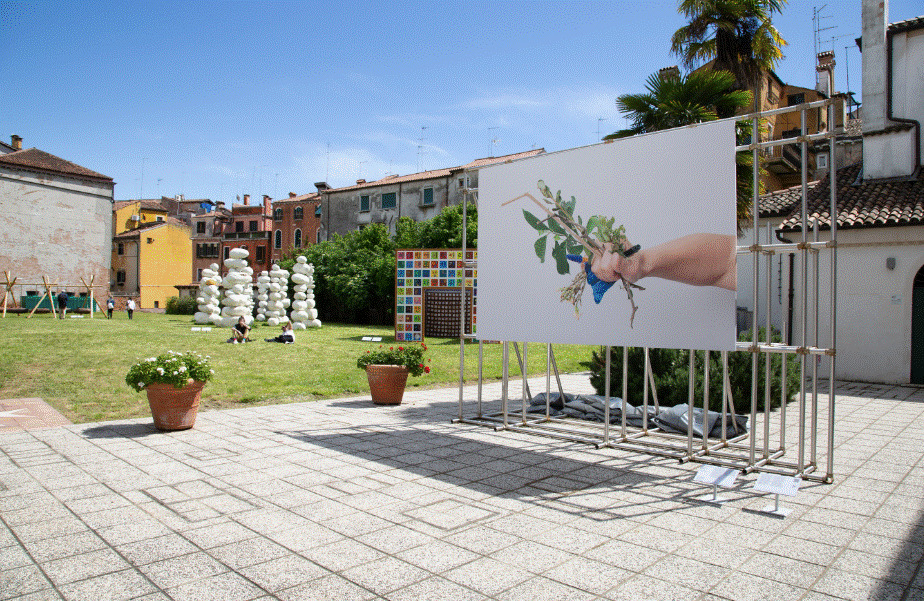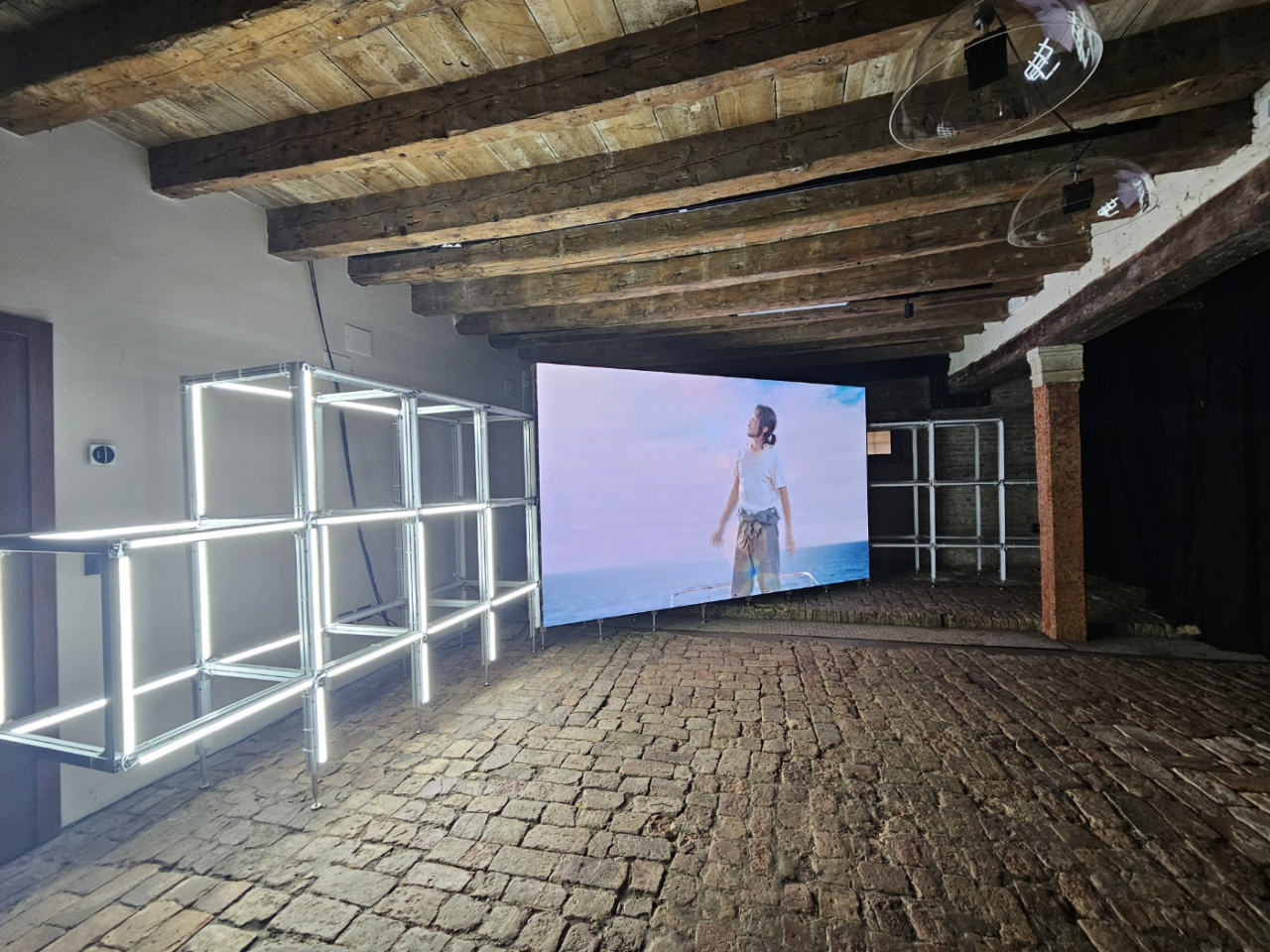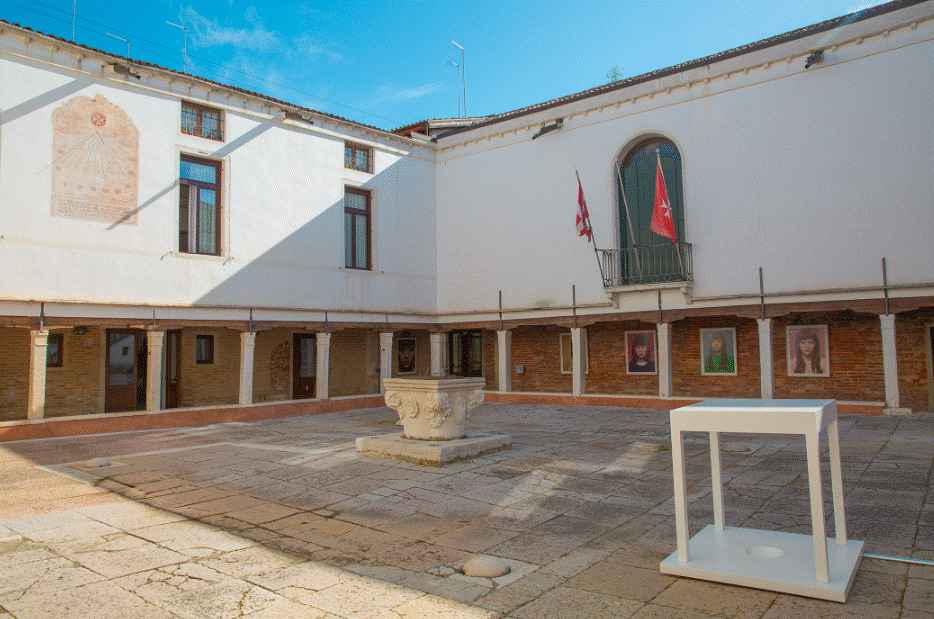 |
Lim Keun-hye, director of Arko Art Center, poses for a photo at “Every Island is a Mountain” at Palazzo Malta-Ordine di Malta in Venice, Italy. (Arts Council of Korea) |
Marking the 30th anniversary of the Korean Pavilion at the Venice Biennale, the history of the pavilion is being presented at Palazzo Malta-Ordine di Malta, a few minutes walk from the Giardini Garden, one of the main venues of the Venice Biennale.
Entitled “Every Island is a Mountain,” the exhibition at Palazzo Malta-Ordine di Malta brings together 36 artists who have participated in the prestigious biennale over the last three decades, as well as archival material on the Korean Pavilion.
“The exhibition aims to show the 30-year history of Korean art at the Venice Biennale,” Lim Keun-hye, director of Arko Art Center, who curated the exhibition, said on Aug. 1 in Seoul. “Just like islands are interconnected beneath the sea through underwater terrain, the theme suggests that individual lives and art are intrinsically linked to historical and social contexts.”
 |
Installation view of "Every Island is a Mountain" (Arts Council of Korea) |
Arko Art Center has been in charge of the Korean Pavilion since 2023 after the commissioner of the Korean Pavilion, the Arts Council of Korea, transferred the task to the affiliated museum in an effort to secure expertise in operating the pavilion. The Venice Biennale takes place every year, interchanging themes of art and architecture.
“I thought we have to understand how the Korean Pavilion has been operating and showing works for the three decades, and that is the starting point for moving forward for the coming decades,” said Lim, who was inaugurated as the director of Arko Art Center in 2020.
The exhibition unfolds across the Palazzo's intimately clustered chambers, tranquil courtyards and outdoor gardens. It is known for its long-standing tradition of hospitality and inclusiveness, deeply rooted in a medieval history of offering solace and healing to pilgrims and knights.
The corridor-flanked exhibition rooms are like “islands,” creating a nuanced topography akin to submerged mountain ranges, guiding visitors through the works of 36 artists, including Jung Yeon-doo, Suh Do-ho, Bae Young-whan, Moon Sung-sic and Kang Ik-Joong.
 |
Installation view of "News From Nowhere: Eclipse" by Moon Kyung-won & Jeon Joon-ho at "Every Island is a Mountain" (Park Yuna/The Korea Herald) |
“The site is so unique that it dominates the exhibition. The monastery building has been in existence since the 13th century going through the Crusades, functioning as a place to treat wounded people," Lim said.
The exhibition starts with archival materials that show how the Korean Pavilion was made possible in 1995 after Korean-born video art pioneer Paik Nam-june won the Golden Lion for Best National Pavilion in 1993 as an artist featured at the German Pavilion. It is widely known that Paik played a pivotal role in founding the Korean Pavilion.
“Having no Korean Pavilion was indeed a shame, yet possessing one now does not justify excessive pride. … Boasting about it, like the Olympics, would only invite international ridicule. Sports and art are different; while winning is paramount in sports, in art, the essence lies not in who is better -- but in how they differ,” a quote attributed to Paik from the January 1995 issue of the Wolgan Misul magazine reads on a wall at the exhibition. Paik died in 2006.
 |
Installation view of "Every Island is a Mountain" (Arts Council of Korea) |
Paik’s philosophy of art inspired Lim when she thought of the theme for “Every Island is a Mountain,” intertwining art into ecological ideas.
“What would he have suggested 30 years after the pavilion was founded? He probably not only transcended the East and West, but expanded his ideas of combining art and technology to the ecological realm,” Lim said.
When it comes to the meaning of the Venice Biennale, Lim said while the "centripetal force" has weakened compared to decades ago as international art events have begun to grow around the world, the Venice Biennale is still powerful for delivering the discourse in the global art scene.
"Venice Biennale has contributed to expanding the art discourse to include other regions such as Asia, South America and Africa, at a time when such discourse was focused on Western Europe," she said. "I think it will continue to grow its presence along with other biennales," she said.
"Every Island is a Mountain" runs through Sept. 8.






![[Herald Interview] How Gopizza got big in India](http://res.heraldm.com/phpwas/restmb_idxmake.php?idx=644&simg=/content/image/2024/11/20/20241120050057_0.jpg)
